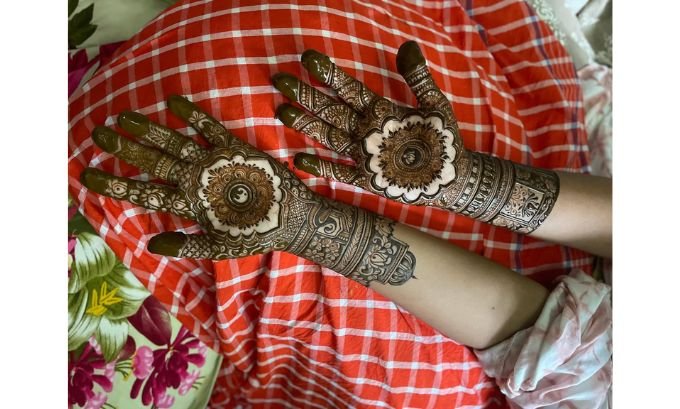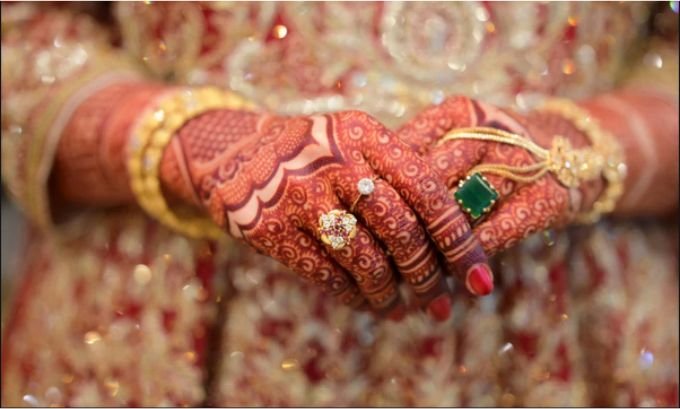Mehndi, the ancient art of applying henna to the skin, is a beautiful and intricate tradition cherished across many cultures. From elaborate bridal patterns that tell a story to minimalist designs for everyday elegance, mehndi offers a unique way to adorn the body. This temporary art form uses a paste made from the henna plant to create stunning patterns that stain the skin for several weeks.
If you’re looking for inspiration for your next special occasion or simply want to explore this rich cultural practice, you’ve come to the right place. This guide will walk you through some of the most popular mehndi design styles, from traditional Indian patterns to contemporary Arabic motifs. We will explore the symbolism behind common designs and offer tips for choosing a style that perfectly suits your personality and event. Get ready to discover the perfect mehndi design to express yourself.
Table of Contents
Understanding Different Mehndi Styles
Mehndi is not a one-size-fits-all art form. Different regions have developed their own distinct styles over centuries, each with unique characteristics and motifs. Understanding these variations can help you choose a design that resonates with you.
Indian Mehndi Designs
Indian mehndi is arguably one of the most recognized styles, known for its dense and detailed patterns. These designs often cover the entire hands, palms, and feet, extending up the arms and legs. They are incredibly intricate, featuring fine lines, paisleys, floral patterns, and images of peacocks or elephants. Often, a small space is left open on the back of the hand or in the center of the palm, where a central mandala or significant motif is placed to draw the eye.
Bridal Indian mehndi is particularly elaborate. It’s common for the groom’s initials to be hidden within the complex patterns, creating a fun game for the newlyweds to play on their wedding night. Every element in an Indian design can hold symbolic meaning, representing joy, fertility, and good fortune.

Arabic Mehndi Designs
In contrast to the dense patterns of Indian mehndi, Arabic designs are characterized by their boldness and open spaces. These styles typically feature larger, more prominent floral and vine motifs that trail diagonally across the hands, feet, or arms. Because the patterns are less condensed, the negative space on the skin becomes part of the overall design, creating a striking and elegant contrast.
Arabic mehndi often uses a darker henna paste, which results in a deeper, more dramatic stain. These designs are a popular choice for festivals, parties, and even casual wear because they are quicker to apply and have a modern, graphic appeal.
Pakistani Mehndi Designs
Pakistani mehndi designs often blend the intricacy of Indian patterns with the boldness of Arabic styles. You’ll find a beautiful fusion of detailed geometric lines, mandalas, and florals combined with bolder, flowing patterns. These designs are often used for weddings and other significant celebrations, reflecting a rich and balanced aesthetic. It’s common to see both hands heavily decorated with complex patterns that are both symmetrical and unique.
Indo-Arabic Mehndi Designs
As the name suggests, Indo-Arabic designs are a fusion style that has gained immense popularity. This style combines the fine, detailed patterns of Indian mehndi with the bold, less-cluttered outlines of Arabic designs. For example, a design might feature a bold Arabic-style vine filled in with delicate Indian-inspired motifs like paisleys and dots. This hybrid approach offers the best of both worlds, creating a look that is both intricate and eye-catching.
Moroccan and African Mehndi Designs
Moroccan mehndi, also known as North African henna, is distinct for its use of geometric shapes, dots, and symbolic patterns. Designs often feature diamonds, triangles, and zig-zag lines, with symbols believed to ward off the evil eye and bring good luck. The patterns are typically symmetrical and adorn the hands and feet. The designs are less about delicate florals and more about powerful, symbolic shapes that hold deep cultural meaning.

Popular Mehndi Motifs and Their Meanings
Many of the recurring patterns in mehndi are not just for decoration; they carry symbolic weight. Understanding these meanings can add another layer of appreciation to your design.
- Flowers and Vines: Floral patterns, especially lotus flowers, are very common. They symbolize beauty, purity, and new beginnings. Vines and leaves often represent devotion and vitality.
- Mandalas: These circular designs represent the universe and are a focal point in many Indian patterns. They are meant to be a visual representation of wholeness and harmony.
- Peacocks and Birds: Peacocks are a symbol of beauty and majesty. Birds in general often signify freedom and the connection between heaven and earth.
- Sun and Moon: The sun represents knowledge and everlasting light, while the crescent moon can symbolize new beginnings and the birth of a child.
- Water and Ripples: Wavy lines or ripple patterns often symbolize flowing water, which represents purity and the flow of life.
Choosing the Right Design for Your Occasion
With so many styles to choose from, how do you pick the right one? The occasion and your personal style are the two most important factors to consider.
For a Wedding
Brides typically opt for traditional and elaborate designs, like Indian or Pakistani mehndi. These intricate patterns signify the importance of the event and are a beautiful part of the bridal adornment. A full bridal mehndi can cover the hands, arms, feet, and shins.
For Festivals and Parties
Festivals like Eid, Diwali, or Karva Chauth are perfect occasions for mehndi. Arabic or Indo-Arabic designs are popular choices as they are striking and can be applied relatively quickly. You might choose a design that covers the back of one hand or a simple trail that runs up a finger.
For a Modern, Minimalist Look
If you prefer a more subtle look, a minimalist design is a great option. This could be a small mandala on the back of your hand, a simple geometric pattern on your fingers, or a single vine trailing down your foot. White henna or “jagua” (a natural black dye) are also modern alternatives for a temporary, chic look.
Find Your Perfect Henna Style
Mehndi is more than just temporary body art; it is a celebration of culture, beauty, and personal expression. Whether you are drawn to the dense, storytelling patterns of Indian designs, the bold elegance of Arabic motifs, or the geometric symbolism of Moroccan henna, there is a style that can speak to you.
The next time you’re considering getting mehndi, think about the story you want to tell. Explore different styles, understand their meanings, and choose a design that truly feels like an extension of your own personality. Find a talented local artist, discuss your vision, and enjoy the timeless beauty of this incredible art form.

